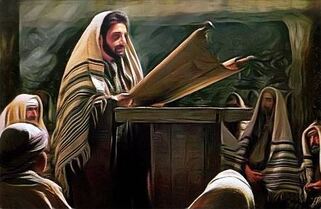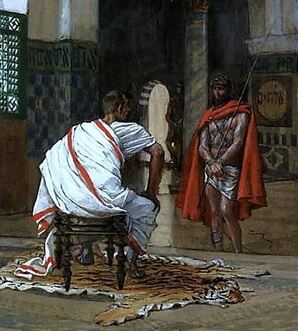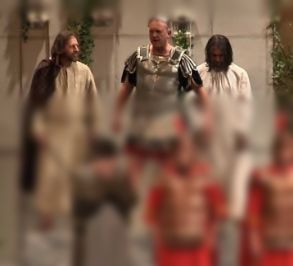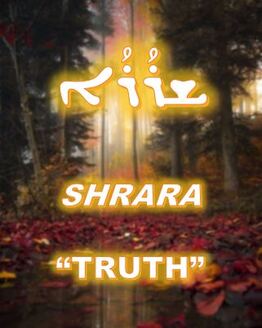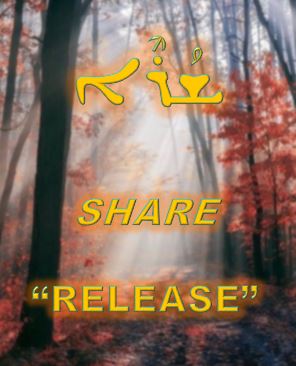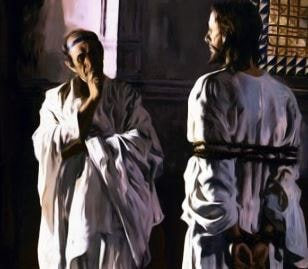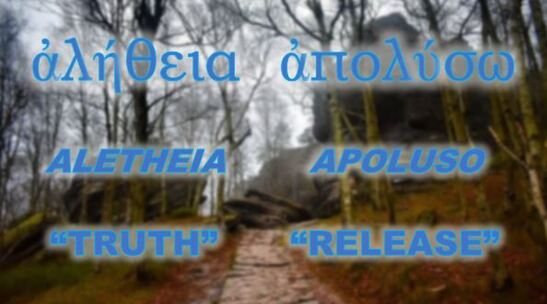RELEASE THE PRISONER
by Jeremy Chance Springfield
1/4/2021
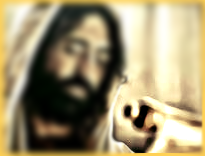
The inauguration of Yeshua’s ministry had its first recorded event in Israel’s northern frontier of Galilee. Inside a synagogue in the small town of Nazareth—His hometown—the unlikely rabbi opened His mouth and so began a journey that would take Him across the Holy Land.
Yeshua would prove to be a force to be reckoned with: influencing the small and large alike, restoring faith to flight in so many and ruffling the feathers of those who had long been soaring on the wings of religion—His highly unorthodox rabbinic journey would see Him ascend ultimately to the heights of Jerusalem in the south, in whose cosmopolitan environs He would give Himself up willingly to bring freedom to mankind.
Yeshua would prove to be a force to be reckoned with: influencing the small and large alike, restoring faith to flight in so many and ruffling the feathers of those who had long been soaring on the wings of religion—His highly unorthodox rabbinic journey would see Him ascend ultimately to the heights of Jerusalem in the south, in whose cosmopolitan environs He would give Himself up willingly to bring freedom to mankind.
It was in that humble synagogue in Nazareth that Yeshua—empowered for the calling laid upon Him after His wilderness fast—was handed the scroll of Isaiah during the reading of the haftarah portion of the service. We read about this special moment in Luke 4:16-19.
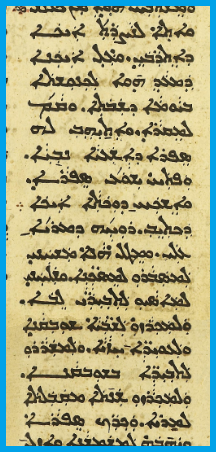
16 And He came to Natzrath, where He had had been raised, and went, as that was His custom, to the assembly on the day of the Sabbath, and He stood to read.
17 And there was given to Him the scroll of Eshaya the prophet. And Yeshua opened the scroll, and found the place where it is written:
18 “The Spirit of Marya is upon me, and on account of this, I am anointed to declare to the poor, and sent to heal the broken of heart, and to proclaim to the captives release, and to the blind, sight, and to strengthen the broken with release,
19 and to proclaim the acceptable year of Marya!”
The passage Yeshua read from was Isaiah 61:1. It was a powerful claim Yeshua made of being the significant Messianic figure everyone was awaiting—one who would engage in a ministry of restoration for the people of Israel. His choice to utter these words and then go on in the ensuing verses to claim they were fulfilled in Him was a huge mantle He was taking upon Himself. Through the preaching of hope to the hopeless, miracles of healing to the hurting, and so much more, Yeshua’s acts would see Him meet the criteria needed for Him to fulfill the prophecies concerning the Messiah.
As this ministry progressed, Yeshua is recorded to have referenced this same Scripture in another instance. This second reference highlights two details of the prophecy that required fulfillment. Matthew 11:2-5 preserves the response Yeshua gave to the disciples of John the baptizer when they sent question from their teacher as to whether or not Yeshua was truly fulfilling the Messianic expectations originally had of Him.
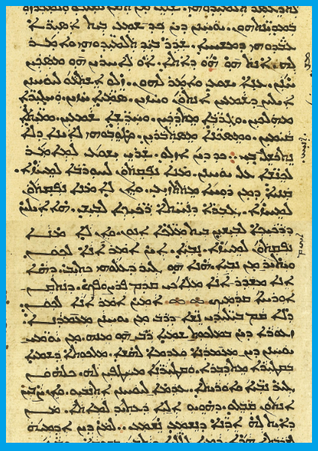
2 Yet, Yukhanan, when he heard [from] the house of prison the deeds of Messiah sent by the hand of his students,
3 then he said to him: “Are you he who comes, or for another are we waiting?”
4 Yeshua replied, and said to them, “You must go; you must relate to Yukhanan these that you are hearing, and you are seeing:
5 the blind are seeing, and the lame are walking, and the lepers are purified, and the deaf are hearing, and the dead are being raised, and the poor are being declared to!
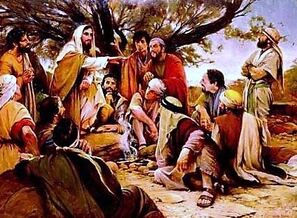
In His detailed reply to His imprisoned forerunner, notice that Yeshua did not include the latter two parts of Isaiah 61:1. This was by no means a mistake, but was done for two reasons.
The first reason was that the first part of the latter two parts was being fulfilled at that very moment with His reply to the disciples of John—he was proclaiming that very “freedom” to the prisoner himself—John need not be bound any longer to the worry that Yeshua was potentially not the right Messianic candidate, for He was absolutely fulfilling the duties of the Messiah. These duties were expressed in His response to the Baptizer.
The second reason is that the second part of the latter two parts of Isaiah 61:1 had not yet occurred—yet it would happen in a truly amazing and unforeseen manner!
The first reason was that the first part of the latter two parts was being fulfilled at that very moment with His reply to the disciples of John—he was proclaiming that very “freedom” to the prisoner himself—John need not be bound any longer to the worry that Yeshua was potentially not the right Messianic candidate, for He was absolutely fulfilling the duties of the Messiah. These duties were expressed in His response to the Baptizer.
The second reason is that the second part of the latter two parts of Isaiah 61:1 had not yet occurred—yet it would happen in a truly amazing and unforeseen manner!
To see that fulfillment of setting a prisoner free, we must go to the account of the final hours of Yeshua’s mortal life on this earth. After His arrest by the Temple guards and His trial before the high priest, Yeshua was delivered as a man deemed worthy of the death penalty to Pontius Pilate. The intent was that the Roman governor would carry out the sentence on behalf of the Jewish court’s ruling, for they themselves had been stripped of their authority to execute one they found guilty of crimes deserving death.
Each of the Gospel accounts present the meeting with Pontius Pilate, but John’s record contains details directly impacting the prophetic role Yeshua had undertaken in the context of Isaiah 61. In John 18:33-40 is the relevant portion of their meeting.

33 Yet, Pilatos entered to the Praterin, and called out to Yeshua, and said to Him, “Are you he—their king? Of the Yihudaye?”
34 Yeshua said to him, “From yourself do you say this, or have others said this about Me?”
35 Pilatos said to Him, “What? Am I a Yihudaya? The sons of your people, and the highest of the priests are who delivered you to me. What have you done?”
36 Yeshua said to him, “My own kingdom is not from this world. If this world was My kingdom, My ministers would have rioted that I should not be delivered to the Yihudaye. Yet, now, My kingdom is not from here.”
37 Pilatos said to Him, “Then you are a king?” Yeshua said to him, “You said that I am a king. For this I was born, and for this I came to the world: to testify about the truth. All who are of the truth hear My voice.”
38 Pilatos said to Him, “What is truth…?” And when he said this, he went out again unto the Yihudaye, and said to them, “I find not even one cause in him,
39 yet, you have a custom that one I should release to you on the Petzkha. Do you desire, therefore, that I should release to you this ‘King of the Yihudaye?”
40 And they cried out, all of them, and said, “Not this [one], but Bar Abba!” Yet, this Bar Abba was a robber.
This is the only time in the Gospel accounts apart from Yeshua’s reply to John the Baptizer’s disciples that He is linked to a prisoner. Barabbas comes into the situation due to the solution Pilate assumed would take care of this Messianic problem standing before him. However, instead of releasing Yeshua, the inclusion of Barabbas only sealed the fate of the would-be king of the Jews, as we see stated clearly in Luke 23:25.
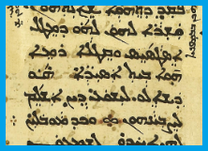
And he released for them him who, on account of rebellion and murder, had been cast into the house of prison, of whom they asked. Yet, for Yeshua, he delivered Him up to their desire.
The prisoner was freed, and Yeshua went to His gruesome death upon the cross. His involvement in this matter resulted in the freeing of the bound, just as the Messianic prophecy asserted must happen!
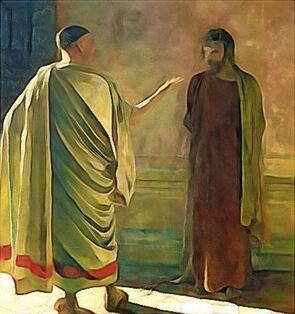
The unique nature of this prophetic fulfillment, however, is in the subtle nuance of the prophecy. Returning to the text of Isaiah 61:1, we find that it says the Messiah will proclaim the release for the prisoners. The key detail is that the Messiah “proclaims” the prisoner is released. He does not himself release the prisoner but speaks in such a way that the prisoner is ultimately given release.
Perceiving this nuance is vital for us to understand the final part of the Messianic acts Isaiah 61:1 stated would happen.
Pilate enacted the literal release--not Yeshua.
This detail aligns with the nature of the prophecy.
So, where did Yeshua proclaim the release of the prisoner Barabbas?
Looking back at the words of the interaction between Yeshua and Pilate, do we find Yeshua proclaiming the prisoner’s release?
It is admittedly absent from the plain text of the translation I have provided, and the curious reader would find that no other translation includes any useful addition that would solve this seemingly subtle aspect of the prophecy from Isaiah 61:1.
The answer is found when we return to the Aramaic text of the Peshitta’s version of the above interaction recorded in John 18. In verse 37 we read Yeshua’s words to Pilate, that He came to “testify about the truth. All who are of the truth hear My voice.”
Pilate’s reply to this assertion is the seemingly timeless question beginning verse 38: “What is truth…?”
The term used by Yeshua and Pilate is the Aramaic word SHRARA, simply meaning “truth.”
Perceiving this nuance is vital for us to understand the final part of the Messianic acts Isaiah 61:1 stated would happen.
Pilate enacted the literal release--not Yeshua.
This detail aligns with the nature of the prophecy.
So, where did Yeshua proclaim the release of the prisoner Barabbas?
Looking back at the words of the interaction between Yeshua and Pilate, do we find Yeshua proclaiming the prisoner’s release?
It is admittedly absent from the plain text of the translation I have provided, and the curious reader would find that no other translation includes any useful addition that would solve this seemingly subtle aspect of the prophecy from Isaiah 61:1.
The answer is found when we return to the Aramaic text of the Peshitta’s version of the above interaction recorded in John 18. In verse 37 we read Yeshua’s words to Pilate, that He came to “testify about the truth. All who are of the truth hear My voice.”
Pilate’s reply to this assertion is the seemingly timeless question beginning verse 38: “What is truth…?”
The term used by Yeshua and Pilate is the Aramaic word SHRARA, simply meaning “truth.”
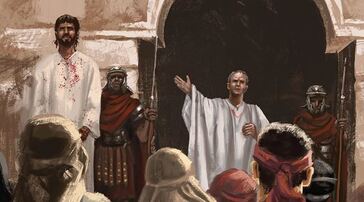
With this question left lingering in the air between them, Pilate leaves Yeshua’s presence and goes out to speak with the Jewish leaders. He ends verse 38 by admitting to all that he can find no fault worthy of death for Yeshua, but then offers a compromise in verse 39: he reminds of them of a custom where he graciously sanctions a “release” for them of a prisoner right before the biblical festival of Passover.
In this is held the key to understanding the final Messianic act prophesied by Isaiah 61:1.
Pilate’s sudden mention of the custom of providing a “release” for a prisoner seems to come out of nowhere. In his attempt to understand the situation surrounding this Galilean accused of asserting a royal right to rule, and thus a threat to the Roman governance over Israel, he was unable to verify any such immediate or viable threat from the oddly closed-lipped rabbi. When they did finally converse, it was over the claim that Yeshua’s purpose was to testify of the “truth.” Pilate’s response was a lingering question of “truth” itself, and in that question lay the way out of the difficult circumstance placed before the Roman ruler. Something about their encounter initiated his proposal of the “release” of a prisoner, which he assumed would naturally be the harmless rabbi, and not the dangerous Barabbas.
In this is held the key to understanding the final Messianic act prophesied by Isaiah 61:1.
Pilate’s sudden mention of the custom of providing a “release” for a prisoner seems to come out of nowhere. In his attempt to understand the situation surrounding this Galilean accused of asserting a royal right to rule, and thus a threat to the Roman governance over Israel, he was unable to verify any such immediate or viable threat from the oddly closed-lipped rabbi. When they did finally converse, it was over the claim that Yeshua’s purpose was to testify of the “truth.” Pilate’s response was a lingering question of “truth” itself, and in that question lay the way out of the difficult circumstance placed before the Roman ruler. Something about their encounter initiated his proposal of the “release” of a prisoner, which he assumed would naturally be the harmless rabbi, and not the dangerous Barabbas.
When we return to the Aramaic of Pilate’s words, we find the missing piece that connects Yeshua’s proclamation of testifying to the “truth” with the sudden mention of “release” by Pilate, for the Semitic term he used when speaking to the Jewish leaders was the word SHARE “release,” which in inflected form in the text is ESHRE, and in this it “shares” a clear phonetic link with the word SHRARA “truth!”
Therefore, when we look at the interaction between Yeshua and Pilate from its original Aramaic exchange, we have the necessary information before us to appreciate why Pilate initiated the compromise of “releasing” a prisoner immediately after Yeshua brought up the notion of His purpose being to “testify about the truth.” To “testify” is a legal act, and Yeshua stood before the Roman ruler in a legal situation of discovery, and so we can appreciate the relevance of Messiah’s statement all the more in that when He said the word “truth,” it triggered in Pilate’s mind the Aramaic term for the custom that could provide a way out of a perplexing situation—Yeshua’s testifying to the “truth” directly lead to Pilate “releasing” the prisoner Barabbas!
Interestingly, the Greek manuscripts hold absolutely no wordplay between the two words of “truth” and “release,” showing that Greek was not the language used between Yeshua and Pilate at this trial. Rather, the Aramaic tongue—in widespread use in these Eastern lands for centuries—was the language employed in their conversation.
Understanding these matters, we can see that Yeshua proclaimed “release” for the prisoner by telling Pilate He was there for a legal purpose—to “testify about the truth!” The utterance of those words compelled Pilate to make the connection to “release,” and to offer that path as a means to resolve the troubling issue presented to him by the Jewish leaders.
The rabbi from Galilee remained imprisoned while Barabbas was set free. Rather than stand up for His own innocence, Yeshua's words moved the seemingly impossible situation facing Pilate to a resolution that would free the one guilty man so very in need of mercy, and send the innocent one to His death.
The final Messianic act of Messiah was to resolve Himself to a dark fate while providing a path of potential redemption for the wicked. One last opportunity to walk away was set before Him, but He chose to use that moment to bring freedom to one more lost soul. By performing this final selfless ministry to the lowest of His people, Yeshua proved to Himself and us all that He truly had the merit to perform the greatest release of prisoners ever undertaken.
The rabbi from Galilee remained imprisoned while Barabbas was set free. Rather than stand up for His own innocence, Yeshua's words moved the seemingly impossible situation facing Pilate to a resolution that would free the one guilty man so very in need of mercy, and send the innocent one to His death.
The final Messianic act of Messiah was to resolve Himself to a dark fate while providing a path of potential redemption for the wicked. One last opportunity to walk away was set before Him, but He chose to use that moment to bring freedom to one more lost soul. By performing this final selfless ministry to the lowest of His people, Yeshua proved to Himself and us all that He truly had the merit to perform the greatest release of prisoners ever undertaken.
Yeshua’s words before Pilate can thus be seen as a direct fulfillment of the final act prophesied in Isaiah 61:1 concerning what the Messiah would do in His ministry. That Messianic role begun in a synagogue in Nazareth came to its final act of ministry to Israel when Yeshua uttered a “release” for the prisoner, mere hours before His meritorious act upon the cross would usher in profound freedom for all mankind.
All study contents Copyright Jeremy Chance Springfield, except for graphics and images, which are Copyright their respective creators.
